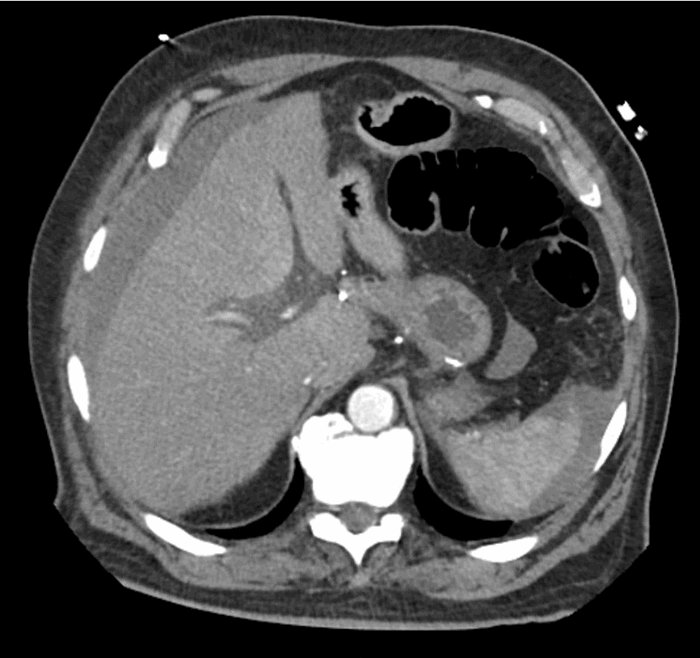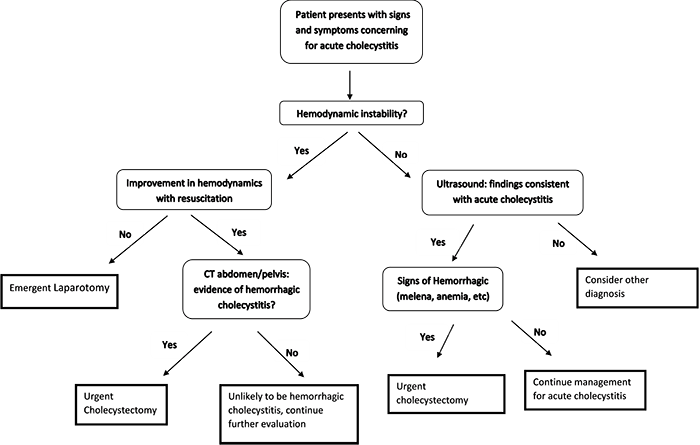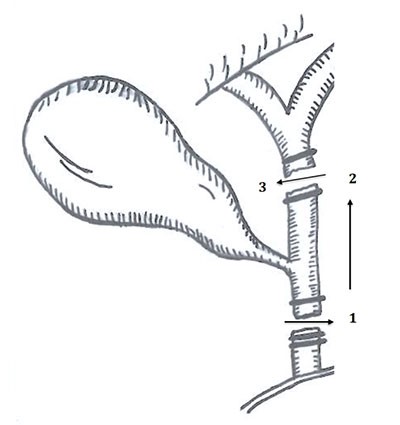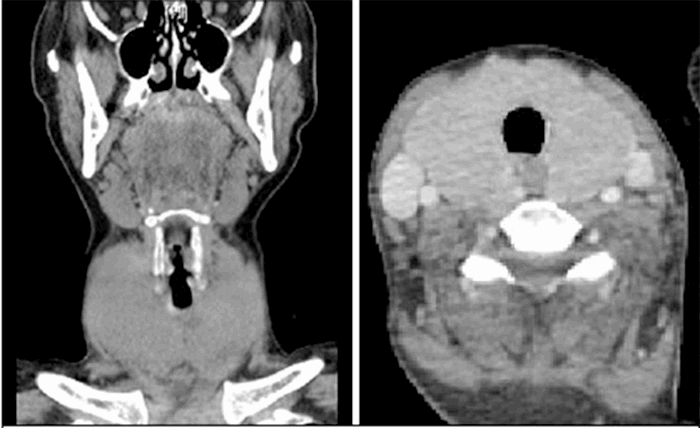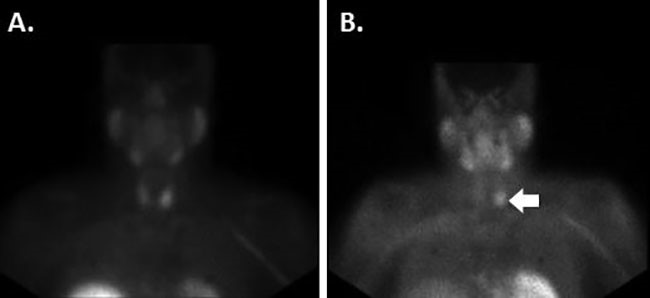Discussion
We performed literature review of hemorrhagic cholecystitis using a key word search via OVID medicine. Key words including “hemorrhagic cholecystitis”, “hemorrhage”, “acute cholecystitis” were used. Ten case reports and one retrospective review article were identified from 1987 to 2017 (Table 1). A total of 33 patients (including this case) were identified and their clinical characteristics described.
| Author | Year Published | Article type | Number of patients | Outcome | Reference |
| Lai et al | 2009 | Case report | 1 | Discharged | 3 |
| Morris et al | 2008 | Case report | 1 | Discharged | 5 |
| Gremmels et al | 2004 | Case report | 1 | Discharged | 6 |
| Pandya et al | 2008 | Case report | 1 | Expired | 4 |
| Tavernaraki et al | 2010 | Case report | 1 | Expired | 9 |
| Hague et al | 2010 | Case report | 3 | Discharged | 10 |
| Stempei et al | 1993 | Case report | 1 | Discharged | 1 |
| Shope et al | 2004 | Case report | 1 | Discharged | 7 |
| Parekh et al | 2010 | Case report | 2 | Discharged | 13 |
| Shishida et al | 2017 | Case report | 1 | Discharged | 2 |
| Chin et al | 1987 | Retrospective review | 19 | Unknown | 12 |
Table 1. Literature review
The average age was 63 and 70% were male. Risk factors identified include uremia, chronic kidney disease (CKD), atrial fibrillation, anticoagulation and/or antiplatelet therapy, chronic obstructive pulmonary disease (COPD) on chronic steroids, and blunt trauma. Among these patients, four patients had CKD and uremia1-3 and two were on anticoagulation therapy (Coumadin).4 Two patient were on aspirin5 and another one was on chronic steroid treatment for (COPD).6 Lastly, one patient had blunt abdominal trauma.7
Acute cholecystitis accounts for 3 to 10% of patients presented with abdominal pain.8 Hemorrhagic cholecystitis is a rare complication of this disease process. Despite the high incidence of acute cholecystitis, we were able to find only 32 hemorrhagic cases reported in the literature. Due to the rarity of the disease, hemorrhagic cholecystitis is not clearly defined in the literature and is used to describe either intraluminal or peritoneal hemorrhage secondary to acute cholecystitis. The degree of hemorrhage varies from asymptomatic to hemodynamically unstable. There exist no guidelines for diagnosis or treatment of this disease. Our experience with one such case, and our review of the literature, allowed us to attempt to generalize how best to diagnose and manage hemorrhagic cholecystitis.
These patients can present quite variably. In our collection of 33 patients, 100% of patients presented with abdominal pain. Some of them had nausea, vomiting and fever. All patients were hemodynamically stable at presentation. Signs of hemorrhage (hypotension, melena, lethargy, and anemia) developed in only 21% of the patients. Other laboratory abnormalities included leukocytosis in 56% of patients and hyperbilirubinemia was reported in 9% of patients. Patients rarely developed hemodynamically significant bleeding requiring close monitoring, adequate resuscitation, reversal of anticoagulation, and urgent intervention. Three cases resulted in death. Our case and the two other mortalities all had significant intra-abdominal bleeding and decompensated quickly. Signs of hemorrhage were present in less than a quarter of the patients in this series. The other patients in this series never developed hemodynamically instability, with 19 patients being diagnosed with hemorrhagic cholecystitis only by final pathology. Therefore, the hemodynamic stability should dictate the plan of management.
In the cases we reviewed, right upper quadrant ultrasound and CT scan of the abdomen and pelvis were the most common initial imaging studies in these patients. Ultrasound findings include distended gallbladder, wall thickening and pericholecystic fluid collection, with the most frequent diagnosis being acute cholecystitis. One study reported ultrasound finding of an intraluminal pulsatile mass.6 CT scans were performed in 11 patients, with only four of those demonstrating active intraluminal extravasation of contrast.4,5,9 A pseudoaneurysm of the cystic artery was present in three patients.10 Other findings suggestive of hemorrhage on CT scan included hemoperitoneum (one patient), blood clots in gallbladder (one patient), and heterogeneous intraluminal fluid (one patient) were described in three patients. Two patients had no significant CT findings. The initial imaging study of choice for biliary disease is ultrasonography.11 However, ultrasound does not appear to be ideal for differentiating between acute and hemorrhagic cholecystitis. The retrospective review study reported ultrasound findings on 19 acute cholecystitis patients with pathological findings of hemorrhage cholecystitis.12 They reported that ultrasound findings suggesting hemorrhagic cholecystitis included intraluminal membrane, focal gallbladder wall irregularities and nonshadowing, nonlayering intraluminal echoes.12 However, these findings were not present in the other 14 patients we reported here. Notably, because the retrospective study was published in 1987, CT scans might not have been widely available. We conclude that CT scan is useful in the diagnosis of hemorrhagic cholecystitis.
Most reports included the final pathology. Full thickness necrosis was found in 13 specimens. The remaining specimens showed features of cholecystitis and blood-filled gallbladders. All specimens demonstrated underlying cholecystitis.
We propose limiting the diagnosis of hemorrhagic cholecystitis to patients that present with signs and symptoms consistent with acute cholecystitis PLUS signs and symptoms of hemorrhage (hypotension, lethargy, melena, anemia), or imaging evidence of hemorrhage. Patients with hemodynamic stability can be managed successfully with laparoscopic cholecystectomy. Their outcomes were very good and all patients who underwent laparoscopic cholecystectomy were discharged home. However, exploratory laparotomy with open cholecystectomy was required in cases with hemodynamically instability. These outcomes were much poorer, as only 2 out of 5 patients who underwent laparotomy survived. While likely multifactorial, this poorer outcome can be attributed to a delayed diagnosis of this rare complication and these patients being at a more advanced stage in disease process at time of surgery. Interestingly, all five patients requiring laparotomy presented in stable condition. This suggests a window of time between presentation and clinical decompensation during which expedited evaluation and intervention could have been performed to allow a more favorable outcome. Hemodynamical instability in acute cholecystitis should be evaluate in the same manner as a trauma patient: assume bleeding until proven otherwise. Expedited resuscitation and urgent operative intervention are the only effective treatment; any delay will lead to poor outcome.
Conclusion
Hemorrhagic cholecystitis is an extremely rare but potentially deadly complication of acute cholecystitis. Prompt evaluation and intervention is required for patients with a concerning clinical presentation. Our proposed algorithm may help in the diagnosis and management of this disease entity (Figure 4).



